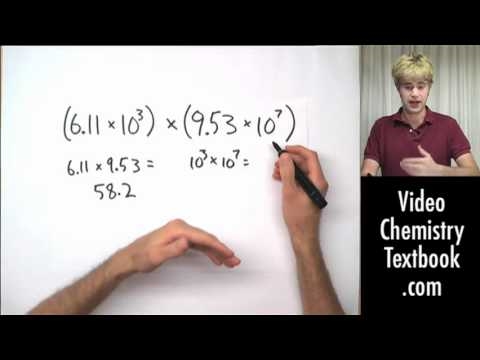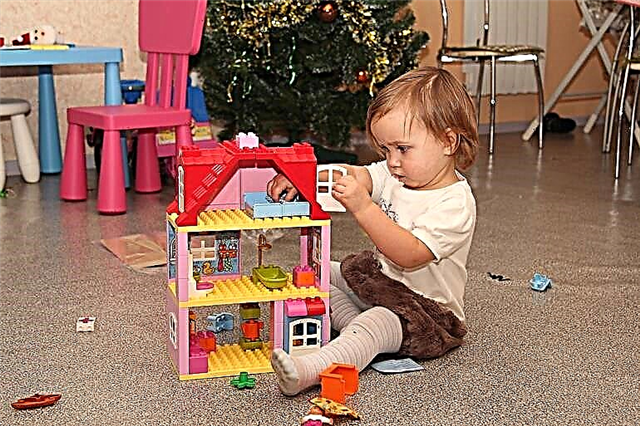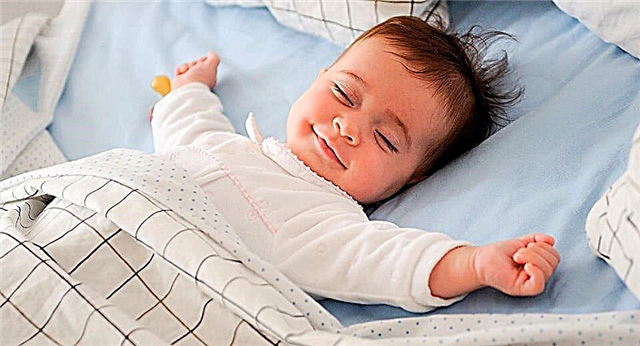
What does ADHD mean?
Nowadays, many parents, coming to a neurologist, or just by ear, are faced with such a concept as a "hyperactive" child or a child with attention deficit hyperactivity disorder - ADHD. Let's see what it means. The word "hyper" - from Greek means to exceed the norm. And the word "active" in translation from Latin means active, efficient. All together - active above the norm.

Psychological characteristics of hyperactive children
Hyperactive children are very restless, they run, jump, and are active all the time. Sometimes it seems to everyone that they have attached a motor that runs endlessly. They can actively move for a long time, even if others do not require it from them.
During games and activities, children cannot sit still and are unable to control their hands and feet. So, at 2 - 3 years old, when the baby is very mobile, he often throws tantrums, is capricious, runs and quickly gets overexcited, gets tired. Against this background, various diseases and sleep disturbances can occur.
In 3-4 years, a disorder of coordination of movements is added, and the parents are so tired of such behavior that they begin to sound the alarm and turn to specialists. It has been proven by experts that the maximum number of manifestations of ADHD symptoms is observed during the period of a child's crisis - at 3 years old and at 6-7 years old. This portrait of a hyper-reactive child really causes many problems and difficulties in parenting for parents.
Parents should not hang their child just like that "ADHD", this can only be done by a specialist - a neurologist, and a psychologist will help in the classroom to correct this behavior. Let's take a closer look at what behavioral signs can occur in children with this syndrome.
We recommend watching a video of the program of the famous children's doctor E. Komarovsky, dedicated to hyperactive children:
Attention deficit and hyperactivity disorder
The symptoms of this diagnosis depend on a combination of three main manifestations:
- Attention deficit (inattention)... The kid is inconsistent in his actions. He is distracted, does not hear speech addressed to him, does not follow the rules and is not organized. Often forgets his belongings and avoids boring, mentally demanding activities.
- Motor disinhibition (hyperactivity). Such children cannot sit in one place for a long time. The adult has the impression that the child has a spring or a running motor inside. They constantly fidget, run, sleep poorly and talk a lot.
- Impulsiveness... The child is impatient, can scream from a place, interfere in the conversation of others, is not able to wait for his turn, sometimes is aggressive. Has little control over his behavior.
If a child shows all of the above symptoms before the age of 6-7 years, then a diagnosis of ADHD can be assumed.

Understanding the reasons
It is important for each parent to know and understand where the child has such symptoms and why. Let's try to clarify all this. The baby's brain at birth was slightly damaged for some reason. Nerve cells, as you know, do not recover, and therefore, after injury, other, healthy nerve cells begin to gradually take over the functions of the injured, that is, the recovery process begins immediately.
Parallel to this is the age-related development of the child, because he learns to sit, walk, speak. therefore from the very beginning, the nervous system of a hyperactive child works with a double load. And in the event of any stressful situation, prolonged stress (for example, adaptation in kindergarten or at school), the child develops a deterioration in the neurological state, symptoms of hyperactivity appear.
Brain damage
- Prenatal pathology;
- Infectious diseases;
- Toxicosis;
- Exacerbation of chronic diseases in the mother;
- Attempts to terminate a pregnancy;
- Immune incompatibility for the Rh factor;
- Taking alcohol and smoking.
Complications during childbirth:
- Malposition;
- Stimulation of labor;
- Asphyxia;
- Internal hemorrhage;
- Premature or prolonged labor.
Genetic causes
Research shows that attention disorder tends to spread in families. Children with ADHD usually have at least one close relative who also has ADHD. One of the reasons for hyperactivity is the congenital high level of excitability of the nervous system, which the child receives from the mother, who is in an excited, stressful state at the time of conception, and in the process of the pregnancy itself.
Psychosocial causes
These are some of the most important causes of hyperactivity. Most often, parents who come to us for a consultation do not suspect that the reasons for this behavior of their children lie in the family:
- Lack of maternal affection and human communication;
- Lack of warm contact with loved ones;
- Pedagogical neglect, when parents do not pay attention to the child at all;
- An incomplete family or many children in the family;
- Mental tension in the family: constant quarrels and conflicts between parents, an excess of emotions and actions associated with manifestations of power and control, a lack of emotions and actions associated with love, care, understanding;
- Child abuse;
- Different approaches to raising a child in a family from the side of different educating figures;
- Parents' immoral lifestyle: parents suffer from alcoholism, drug addiction, commit offenses.

Positive points
But such children have not only defects in behavior, but also many positive qualities. They are unrestrained dreamers and inventors, they always have an extraordinary answer to any question you ask.
As adults, they turn into various showmen, actors, join the ranks of creatively thinking people. They love to dream, and notice in the world around them that which you have not seen.
Their energy, flexibility and desire for success attract people to their person, because they are wonderful interlocutors. In games and various groups, they are always leading, leaders from birth. You will definitely not get bored with them.

Activities and games to correct hyperactivity
For preschoolers
The most complete scheme of psychological correction using games and exercises is described in the books:
I. P. Bryazgunova and E. V. Kasatikova "Restless child":

E. K. Lyutova and G. B. Monina "Hyperactive children":

Artsishevskaya I. "Work of a psychologist with hyperactive children in kindergarten":

Activities that are conducted with these children may include the following methods and techniques:
- games for the development of attention and coordination of movements;
- self-massage training;
- games to develop tactile interaction;
- outdoor games of restraining moments;
- finger games;
- work with clay, sand and water.

Here are some games any mom can do at home from these books for preschool and school children:
- An exercise "Yoga gymnastics for kids»;
- «Setting the alarm"- squeeze the palm into a fist, perform circular movements at the solar plexus;
- «The alarm rang, "ZZZ" - stroking the head with a palm;
- «Sculpt a face"- we run our hands along the edge of the face;
- «We sculpt the hairs»- press the roots of the hair with your fingertips;
- «We sculpt eyes"- we touch the eyelids with our fingertips, we draw the index finger around the eyes. We blink our eyes;
- «We sculpt the nose"- run your index finger from the bridge of the nose along the wings of the nose down;
- «We sculpt ears"- by pinching the earlobes, stroking the ears;
- «Sculpting the chin"- stroking the chin;
- «We draw the sun with a nose " - turn our head, draw rays with a nose;
- «Ironing our pens"- first stroke one hand, then the other;
- We say in chorus: “I am good, kind, beautiful, we pat ourselves on the head ";
- Exercise "One, two, three - speak!": Mom draws a path, grass and a house on a piece of paper or a board. Then he suggests only after the command is heard: "One, two, three - speak!", Say what is drawn in the picture. After that, the mother, with her eyes closed, asks the child to finish drawing a flower or a bird, then she guesses what the child has completed. This game teaches a child to be patient and attentive.
The video below demonstrates a remedial session with hyperactive children:
Game "Watchful eyes"
Mom invites the child to carefully consider what the doll has, her clothes, what color the eyes are. Then the child turns away and tells which doll is from memory.
Exercise "Wonderful bag"
The child examines 6-7 small toys. Mom discreetly puts one of the toys in a cloth bag and invites you to touch the toy in the bag. He takes turns feeling the toy in the bag, and express their assumption. Then he takes out the toy and shows it.
The game "Chants - whispers - silent"
Mom shows the child colored squares. If he sees a red square, then you can jump, run and shout, if yellow, you can only whisper, and if blue, you need to freeze in place and be silent. Also, various games with sand and water are suitable for the baby.

In school children
Proofreader game
Take any printed text with large print. Give one part of the text to the child, leave the other to yourself. As an assignment, ask your child to cross out all the letters "a" in the text, after completing the assignment, exchange texts for mutual verification.
"Monkey"
An adult depicts a monkey, and children repeat after him. First, standing still, and then jumping around the room. We try to keep the image of a monkey in motion.
Twisted lines
Many lines and scribbles can be drawn, and the child must follow a line from beginning to end, especially when it intertwines with others.
"Word series"
Give your child different words: sofa, table, cup, pencil, bear, fork, school, etc. The child listens attentively and claps his hands when he comes across a word that means, for example, an animal. If the child gets confused, repeat the game from the beginning.

When working with hyperactive children, you can use such a method as multi-therapy and fairy-tale therapy. Pick up a cartoon individually for a given child's problems.
Cartoons and fairy tales for the prevention and correction of hyperactivity
Invite your kid to watch the following cartoons:
- "Naughty kitten"
- "Masha is no longer lazy"
- "Monkeys"
- "Naughty Bear"
- "Nekhochukha"
- "Octopuses"
- "Wings, Legs, and Tails"
- "Fidget"
- "Fidget, Myakish and Netak"
- "That's how absent-minded"
- "Petya Pyatochkin"
.
"Correction of motor disinhibition":
- "The naughty kid";
- "Little Chirik";
- “The story of how Lenya stopped being lazy”;
- "Restless Yegorka";
- "Harmful fingers".
"Self-organization of behavior":
- “Children and Parents Defeated Bardak in an Apartment”;
- "A day without rules";
- “Puddle of Bon Appetit!”;
- “The Tale of the Boy Who Didn't Like to Wash His Hands”;
- "The tale of how the clothes offended."

"Ambulance" when working with a hyperactive child in different situations
When your child shows symptoms of ADHD, distract and shift attention:
- Get interested in other activities;
- Ask your child unexpected questions;
- Translate the child's behavior into a joke;
- Do not prohibit the child's action in a categorical manner;
- Do not order arrogantly, but ask to do something politely;
- Try to listen to what the child has to say;
- Try to repeat your request with the same words (in a calm tone);
- Leave alone in the room (if it is safe for his health);
- Do not read lectures (the child does not hear them anyway).
Listen to Dr. Komarovsky's advice on how to raise a hyperactive toddler:
Important Tips
- Children find it difficult to keep a lot of information in their head. It is best to break tasks for them into parts. First give one task, then another. For example, first say that you need to remove the toys and only after the baby has done this, give the following instructions.
- Most hyperactive children have enormous timing problems. They do not know how to plan their activities. That is, they cannot be told that if you complete the task, then in a month you will receive a toy. It is important for them to hear that you put away the toys and you get the candy.
The “token” system works best with these children. For completing any tasks, the child receives a reward in the form of points or tokens, which he then exchanges for something. The whole family can play this game.
- Timer application. It helps children who have problems with their sense of time to keep track of it. You can use a regular hourglass or musical minutes.
- It is imperative to be observed and consulted with a specialist, a neurologist and, if necessary, take medications.
- Eliminate excess sugar intake. This can provide additional energy and lead to overexcitation of the nervous system.
- Eliminate foods that cause food allergies from your diet. These can be various colorants, preservatives, flavorings.
- Provide your child with regular intake vitamins.
- In communication with the child, always maintain a positive attitude.
- Always speak in a calm tone. Avoid the words "no", "you cannot".
- Avoid large crowds and noisy companies.
- Anticipate his overwork, switch your attention.
- Take your child to the sports section, this gives a useful discharge to his body.

Sample menu for a hyperactive child
Nutritionists have developed a special menu for the little fidget.
Breakfast: oatmeal, egg, freshly squeezed juice, apple.
Lunch: nuts or peeled seeds, mineral water.
Dinner: soup with vegetables and herbs, fish cutlet or chicken with mashed potatoes, berry juice jelly.
Afternoon snack: yogurt (fermented baked milk, kefir), whole grain or wholemeal bread, banana.
Dinner: salad from fresh vegetables, buckwheat porridge with milk or cottage cheese, herbal tea from lemon balm or chamomile.
Late dinner: a glass of milk with a spoonful of honey.
This is just an approximate list of dishes, the menu can be adjusted taking into account the risk of possible allergic reactions and addictions of the child.




